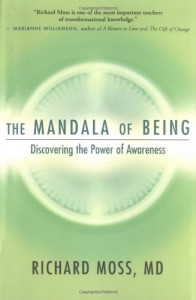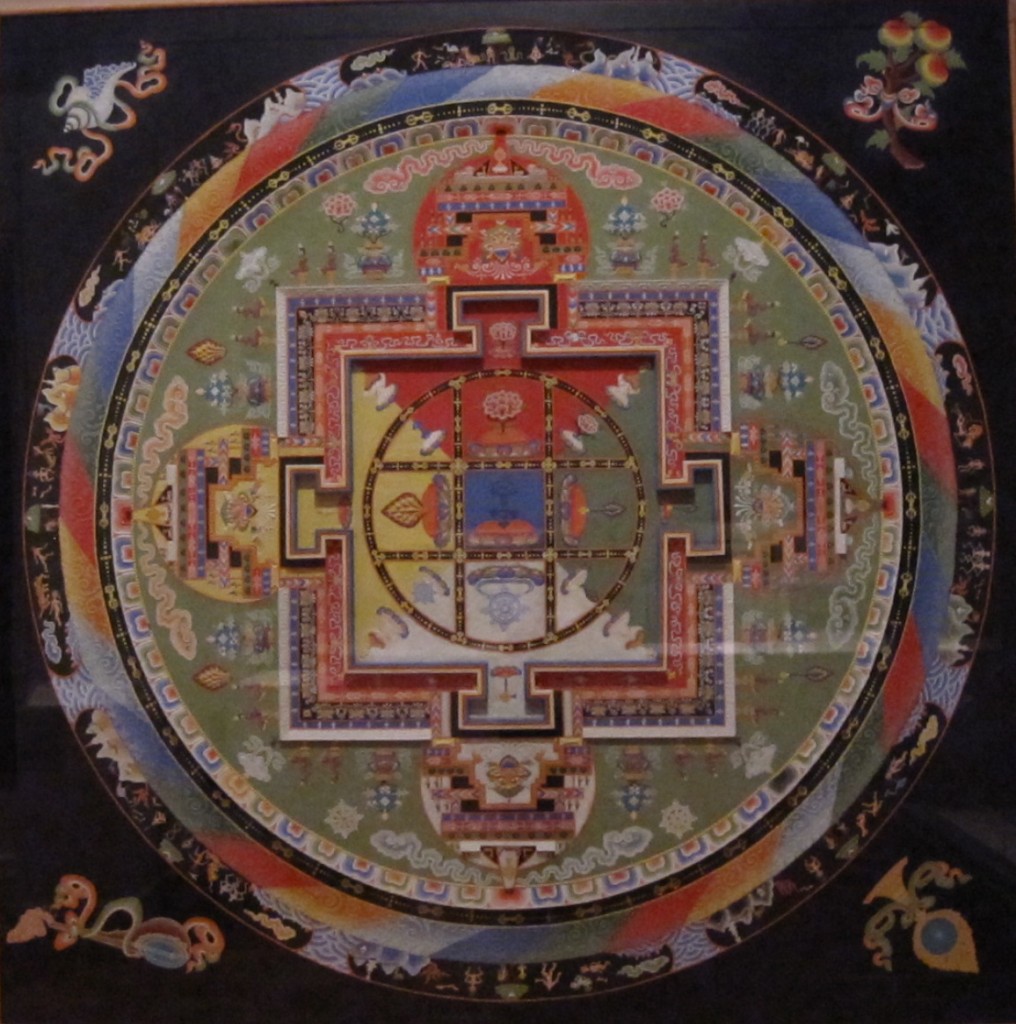One of the happiest parts of this fall for me has been resuming my sitting practice after the disruptions of the summer.
It’s not a long practice, but since the beginning of September, it’s been daily, and that makes me happy.
Two things have changed since I last had a regular meditation date first thing in the morning.
I’ve finally learned that I’m not going to get up every day at the same time – for one thing, I teach late two nights a week.
Now, rather than demand that my sitting happens at some ideal early time, I just sit whenever I get up, and let the rest of the day go from there.
And this time, I’ve found myself automatically using the mandala technique, with great delight.
Instead of just noting when my thoughts capture my awareness and run away with it, I note in which of four directions they’ve gone: Past, Future, Me or You.
These feel like geographical areas.
You sits in front of my face, Me is behind my head, Past by my left ear and Future by my right.
Each time I find myself caught up in thinking, I locate where the thought sits, and from that spot, I move my awareness back to the centre: this breath, my spinal column, this body, this exact moment of here and now. Note the story, drop the story, come back to the present, repeat as needed.
Somehow it helps that each story I tell myself has a spot on the map. Coming back to centre from a specific place makes the return stronger, and the stay longer.
 I learned this technique from Richard Moss’s book, The Mandala of Being (New World Library, 2007).
I learned this technique from Richard Moss’s book, The Mandala of Being (New World Library, 2007).
Moss has a much more complete and compelling explanation, of course.
In the first section of the book, he explains why we find it so hard to stay in our bodies and in the present.
In the second, he introduces the mandala and several formal methods of working with it, including setting it up in physical space and stepping from place to place.
When I started to write this blog post, I picked the book up again and found with some surprise that in Moss’s mandala, Me is to the left, You to the right, Future in front and Past behind.
I can see the logic of this, but I don’t intend to change. My own locations work well for me, and feel natural. (I suspect that Past on the left and Future on the right has everything to do with reading, and the left to right progression of words across the page.)
Moss assigns characteristic emotions to each spot.
Me stories lead to grandiosity or depression.
You stories specialize in anger, jealousy, envy or hurt.
The future holds either inherent uncertainty and fear, or infinite possibility, and hope.
And stories of the past come colored by guilt, nostalgia or regret.
At the moment I seem to specialize in Future/fear, at least those times when I’m not off in Me, busily shoring up my separate identity with fascinating stories about why I am the way I am.
Like any good meditation technique, there’s no need to leave the mandala behind on the cushion.
I find it useful to return to at the beginning of my asana practice, for example, dropping the past and then the future, to situate myself in the present, even before Om and the invocation.
Can I stay there? Usually not. But it helps.
The photo of the Yamantaka Mandala was taken by ellenm1, and is used courtesy of Flickr Creative Commons. It was created in 1991, by the monks of the Gyuto Tantric University, and is made from colored sand and adhesive on wood.


Comments on this entry are closed.
Thanks for the book recommendation! I struggle with meditation and my pranayama practice all the time, trying to keep present and not drift away, or worse, fall asleep. I look forward to getting the book and implenting the mandala technique!
Hey Becky,
I hope it works for you. Keep me posted.
How long do you sit? Or is sitting time also variable?
Training the mind by the mandala technique seems more complicated than the minimalist Zen breath focus. I wonder if by assessing my thought (is it me, you, past, or future?) I’d spiral into a major thinking tangent…
You know, I’d be embarrassed to say how short my sitting is, so I’m not going to. I do have a set time, which is feeling too short, so I might bump it up by another few minutes.
As I understand it, it’s less assessing the thought than just noting it. Where it physically sits for you is usually pretty obvious, so you don’t spend a lot of time working that out.
I don’t have the book in front of me, so this is a reconstruction of a quote - the gist of which is that each time you see what quadrant of the mandala holds the story, you become more able to see that it is, indeed a story you are telling yourself. I’ll try to get my hands on the quote later.
Eve, this blog reminds me about the Roberts Creek Manadala, which is a community building project.
Are you familiar with it?
Here’s their site: http://www.robertscreekmandala.org/
Kris, I know nothing about it.
Went to the website and saw the mandalas year by year, but nothing more about them. Is there more?